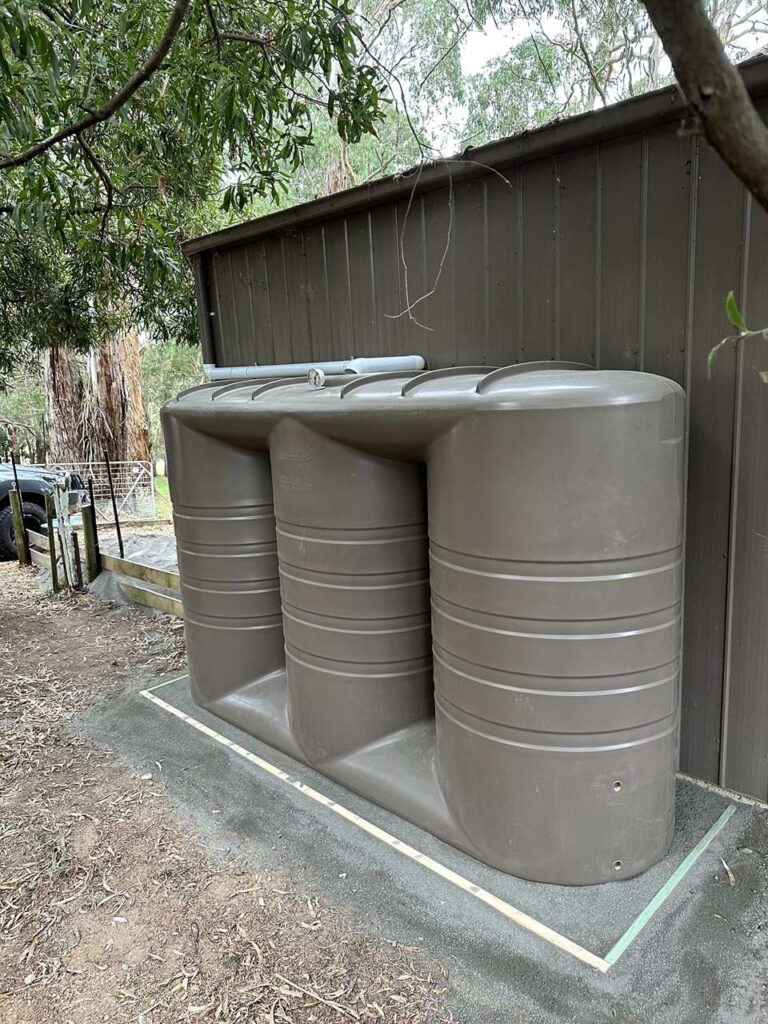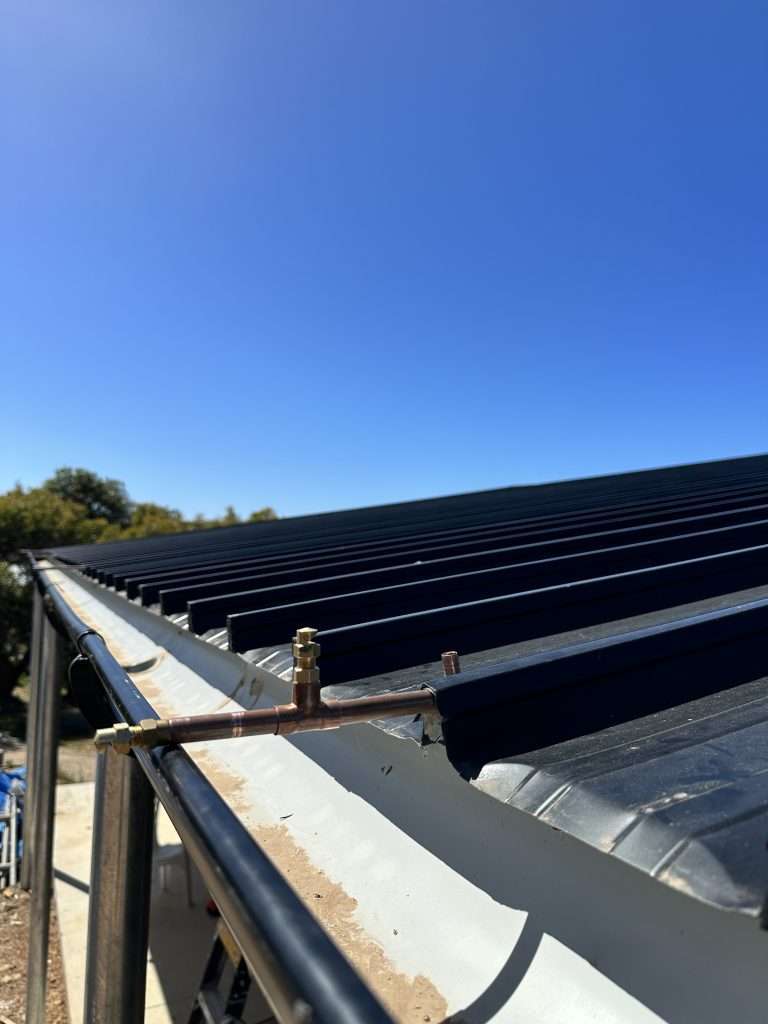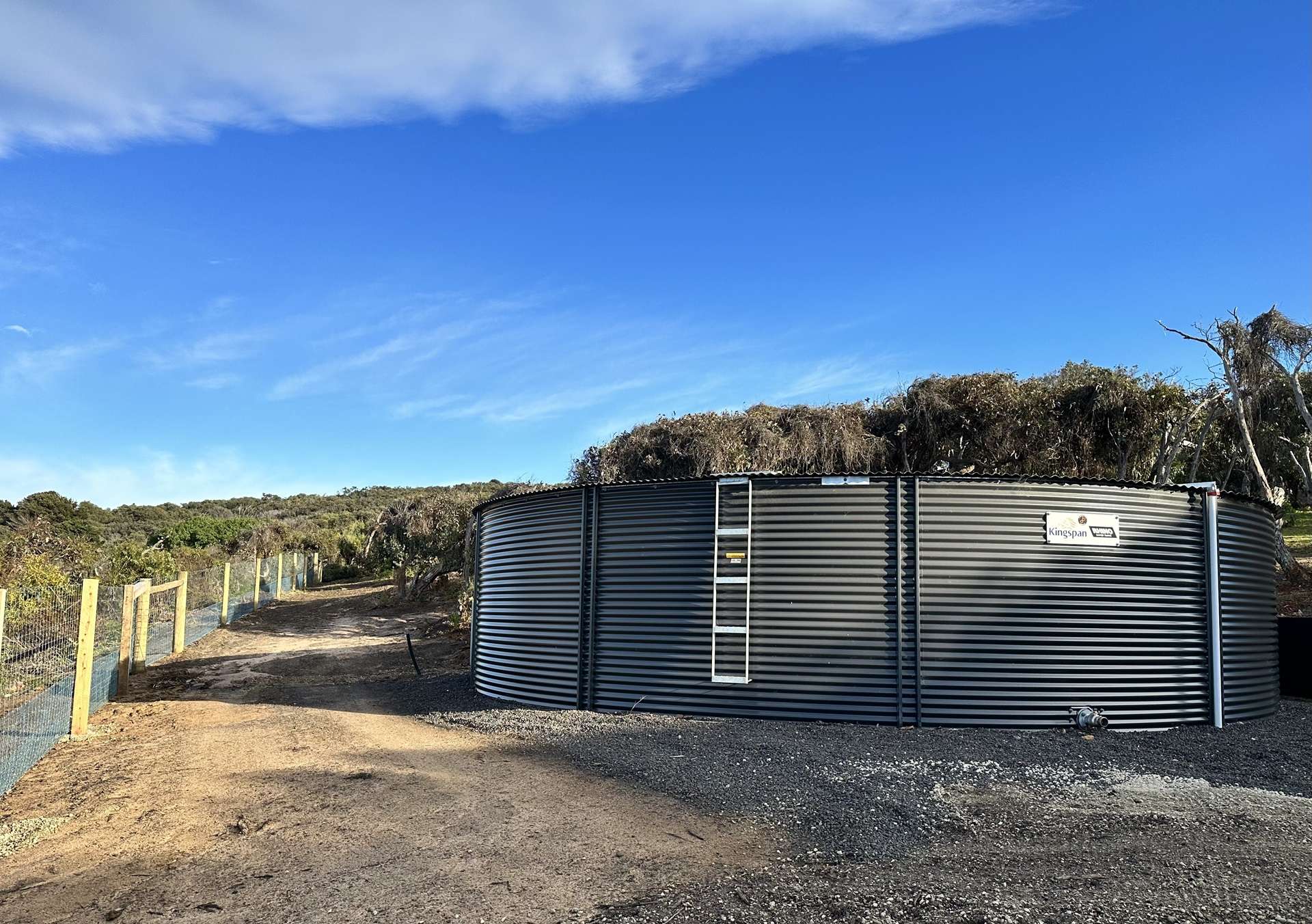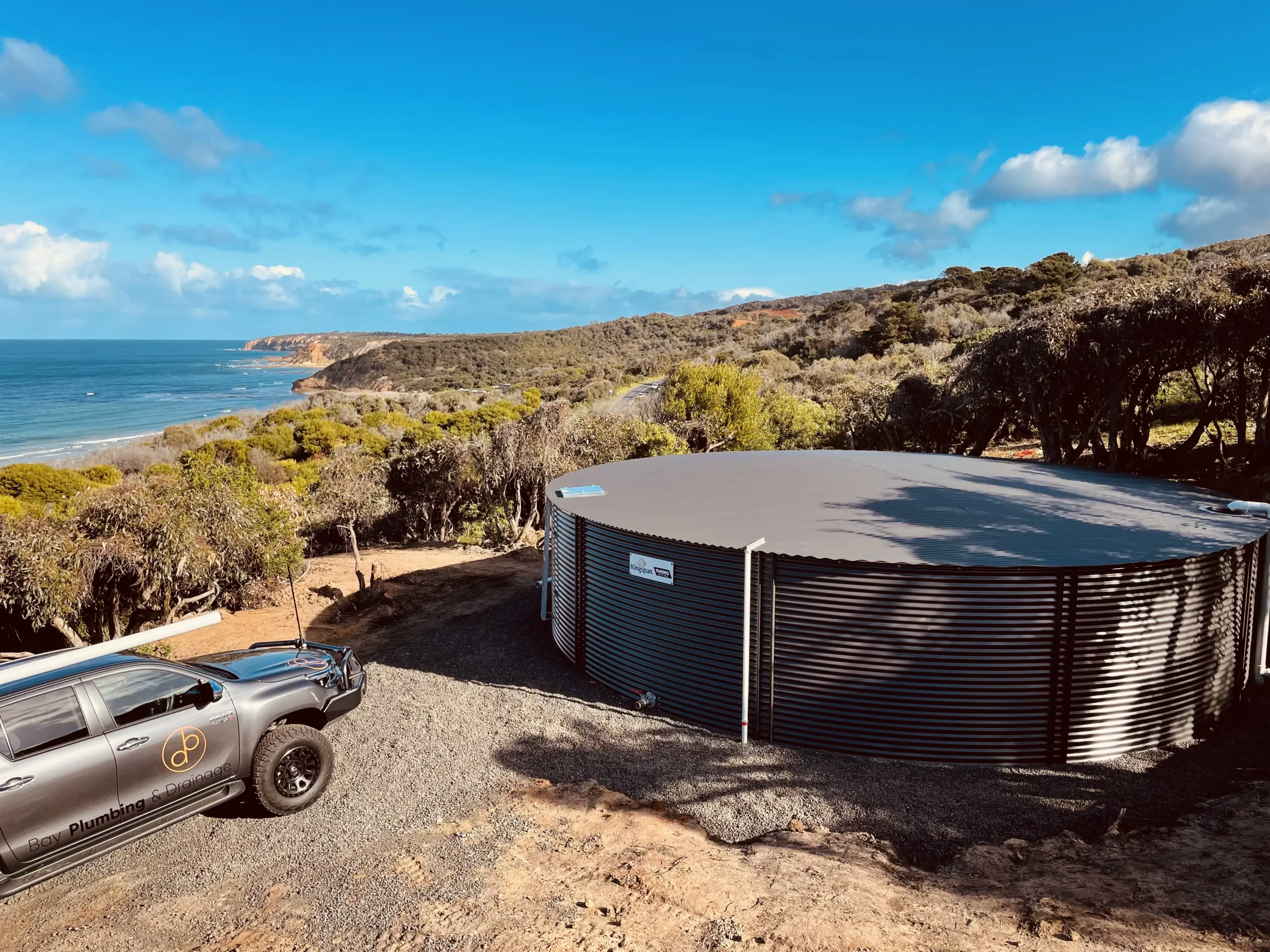A rainwater harvesting system captures water from your roof, filters it through multiple stages, and stores it in tanks for household use like toilets, washing machines, and garden irrigation. A basic system includes gutters, downpipes, first-flush diverters, filters, storage tanks, and a pump to deliver water where needed.
Most Australian homes can collect 600-900 litres per square metre of roof annually, potentially reducing mains water usage by 40-60%. As plumbers with 20 years of expertise serving Geelong, the Surf Coast, and Bellarine Peninsula, our experience installing hundreds of rainwater systems has helped families cut water bills while creating sustainable, drought-resistant properties.
The Basic Components of Rainwater Harvesting
Understanding how rainwater harvesting systems work starts with knowing the key components. Each part plays a crucial role in capturing, cleaning, and delivering quality water to your home.
Essential system components:
- Catchment surface (your roof)
- Guttering and downpipes for collection
- First-flush diverters to remove initial dirty water
- Filters to remove leaves, debris, and particles
- Storage tanks (above or below ground)
- Pumps and pressure systems for water delivery
- Distribution pipes to connect to household fixtures
The genius of rainwater harvesting lies in its simplicity. Rain hits your roof, flows into gutters, gets filtered, and ends up in your tank ready for use. Modern systems are far more sophisticated than the old rainwater tanks our grandparents used, with multiple filtration stages and smart controls.
Many homeowners integrate these systems during new home plumbing construction for optimal design and efficiency. Retrofitting existing homes is possible but requires more planning around existing fixtures and landscaping.
A little while ago, we installed a comprehensive system for an Anglesea family’s home. It collects water from their 200-square-metre roof. During last winter’s heavy rains, they collected over 15,000 litres in just two months – enough to run their washing machine and toilets for six months.
Collection and Initial Filtration Process
The collection process is where the magic begins. Your roof becomes a giant water collector, and every square metre can capture significant amounts of water throughout the year.
The collection sequence
- Rain falls on roof surfaces (tiles, metal, or membrane)
- Water flows through gutters and downpipes
- First-flush diverters discard the initial dirty water
- Leaf screens filter out large debris
- Water enters the tank through inlet filters
First-flush diverters are gamechangers for water quality. They automatically discard the first 20-40 litres of water from each rainfall, which contains dust, bird droppings, and other roof contaminants. This simple device dramatically improves the quality of water entering your tank.
Different roof materials affect collection efficiency. Metal roofs are excellent collectors with minimal absorption, while concrete tiles absorb more water initially but still provide good collection rates. Avoid collecting from roofs with lead-based paints or asbestos materials. Our friendly team can help you determine if your roof material is suitable for installing a rainwater harvesting system.


Storage Solutions and Tank Options
Storage is the heart of any rainwater harvesting system. The right tank size and type depends on your roof area, local rainfall patterns, and intended water usage.
Tank sizing guidelines:
- Small systems (5,000-10,000L): Suitable for garden irrigation
- Medium systems (15,000-25,000L): Covers toilets and washing machines
- Large systems (30,000L+): Can supply most household water needs
- Commercial systems (50,000L+): For extensive properties or businesses
Tank materials each have advantages. Polyethylene tanks are lightweight, affordable, and available in various sizes. Concrete tanks last decades and keep water cooler but require more space. Steel tanks offer durability and can be custom-sized but need internal linings to prevent corrosion.
A client in Portarlington chose an underground concrete tank to maximise their small block’s usable space. The 20,000-litre system supplies their entire household except drinking water, saving them over $800 annually on water bills while maintaining their veggie garden through droughts.
Pumps and Pressure Systems
Getting harvested water where you need it requires the right pumping and pressure system. This is often the most technical aspect of rainwater harvesting, and getting it wrong can cause ongoing frustration.
Pump system options:
- Gravity-fed systems for basic garden use
- Pressure tank systems for consistent household supply
- Variable speed pumps for efficient operation
- Automatic switching between rainwater and mains supply
Pressure systems maintain consistent water flow throughout your home. When you turn on a tap, the pump activates and delivers water at mains pressure. Quality systems include dry-run protection, automatic priming, and quiet operation for residential areas.
Automatic mains switching is brilliant for drought security. When your tank runs low, the system automatically switches to mains water, then back to rainwater when tanks refill. You get the benefits of rainwater harvesting without worrying about running out of water.

Integration With Household Plumbing
Connecting rainwater systems to your home requires careful planning and professional installation. This isn’t a DIY job – Australian plumbing regulations are strict, and mistakes can be costly. In Victoria, any plumbing work for installation of water tanks must be performed by a licensed plumber. Plumbing work valued at $750 or more, including the tank, fittings, and labour, require the plumber to issue a compliance certificate, ensuring you meet Australian Standard AS/NZS 3500. This protects both your family and the public water supply.
Common household connections:
- Toilet flushing (typically 30% of household water use)
- Washing machine cold water supply
- Garden irrigation and outdoor taps
- Pool and spa top-up systems
- Hot water system supply (with appropriate treatment)
Proper systems include backflow prevention, clear labelling of non-potable supplies. Installing rainwater systems during new construction is ideal, allowing for integrated design and optimal pipe routing.
Many homeowners combine rainwater harvesting with water recycling systems for maximum water efficiency. This comprehensive approach can reduce mains water dependence by 70-80% in suitable properties.
Trust Bay Plumbing for Professional Rainwater Systems
Rainwater harvesting systems require expertise in design, installation, and ongoing maintenance. We bring speed, reliability, and transparency to every rainwater project. Our comprehensive approach includes site assessment, system sizing, professional installation, and tips for maintenance. When we install your rainwater tank, we’ll explain exactly how your system works, the cost, and what water savings you can expect.
Now that you know how a rainwater harvesting system works, contact us today to discuss how a rainwater harvesting system can reduce your bills and future-proof your water supply. Don’t miss another drop of free water falling on your roof.









